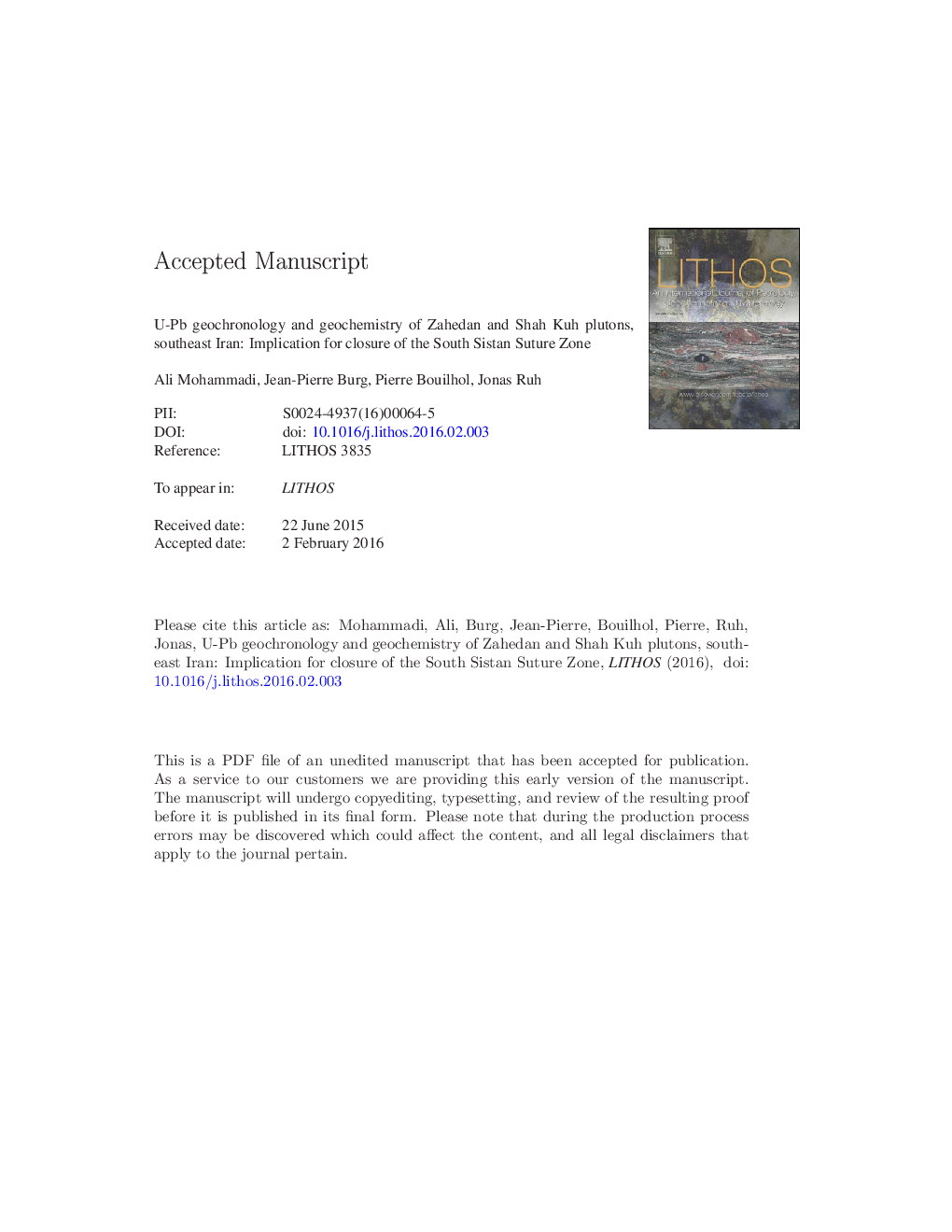| Article ID | Journal | Published Year | Pages | File Type |
|---|---|---|---|---|
| 6440397 | Lithos | 2016 | 45 Pages |
Abstract
We present U-Pb zircon crystallization ages combined with major and trace element analyses, Sr-Nd isotopes and zircon in-situ Hf isotope analyses of intermediate to granitic intrusions along the southern segment of the N-S trending Sistan suture zone in eastern Iran. The Zahedan and Shah-Kuh Eocene plutons consist in a series of granite-granodiorite-rhyolite with U-Pb zircon ages of 40.5-44.3Â Ma and ca. 28.9-30.9Â Ma. Isotope geochemistry and modeling suggest that 40.5-44.3Â Ma plutons represent melts derived from the turbidites of the surrounding accretionary wedge. Melting of the wedge was induced by the intrusion of mantle magmas, with subsequent interaction between mantle- and turbiditic melts being responsible for the wide range of compositions. Most of the 28.9-30.9Â Ma magmas were generated from mantle melting, with assimilation of the surrounding turbidites. The rare setting of within-wedge intrusions is attributed to mantle upwelling reaching wedge sediments at the inception of delamination processes, which signal the end of subduction-related deformational and thermal events in the Sistan suture zone.
Related Topics
Physical Sciences and Engineering
Earth and Planetary Sciences
Geochemistry and Petrology
Authors
Ali Mohammadi, Jean-Pierre Burg, Pierre Bouilhol, Jonas Ruh,
